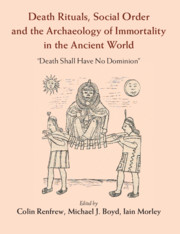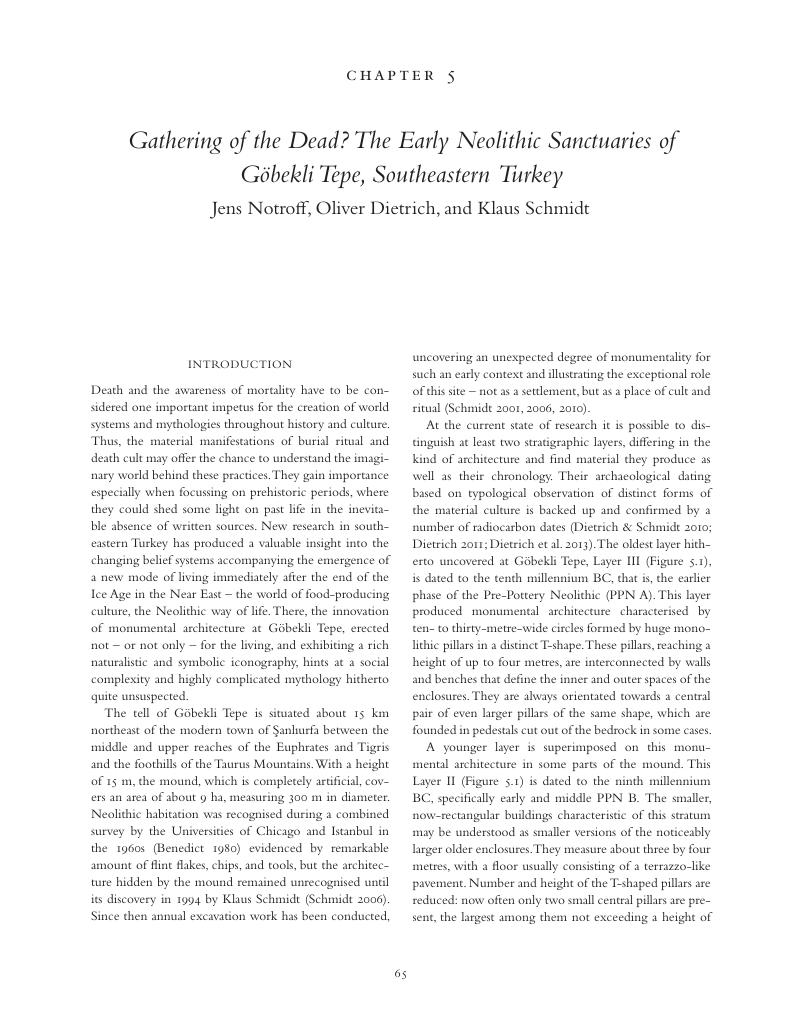 Death Rituals, Social Order and the Archaeology of Immortality in the Ancient World
Death Rituals, Social Order and the Archaeology of Immortality in the Ancient World Book contents
- Death Rituals, Social Order and the Archaeology of Immortality in the Ancient World
- Frontispiece
- Death Rituals, Social Order and the Archaeology of Immortality in the Ancient World
- Copyright page
- Dedication
- Contents
- Illustrations
- Tables
- Contributors
- Preface
- Chapter 1 ‘The Unanswered Question’: Investigating Early Conceptualisations of Death
- Part I Intimations of Mortality
- Part II Mortality and the Foundations of Human Society: Sedentism and the Collective
- Chapter 5 Gathering of the Dead? The Early Neolithic Sanctuaries of Göbekli Tepe, Southeastern Turkey
- Chapter 6 Death and Architecture: The Pre-Pottery Neolithic A Burials at WF16, Wadi Faynan, Southern Jordan
- Chapter 7 Corporealities of Death in the Central Andes (ca. 9000–2000 BC)
- Chapter 8 Mediating the Dominion of Death in Prehistoric Malta
- Chapter 9 House Societies and Founding Ancestors in Early Neolithic Britain
- Part III Constructing the Ancestors
- Part IV Death, Hierarchy, and the Social Order
- Part V Materiality and Memory
- Part VI Intimations of Immortality: Glimpsing Other Worlds
- Part VII Responses and Reactions: Concluding Thoughts
- Index
- References
Chapter 5 - Gathering of the Dead? The Early Neolithic Sanctuaries of Göbekli Tepe, Southeastern Turkey
from Part II - Mortality and the Foundations of Human Society: Sedentism and the Collective
Published online by Cambridge University Press: 05 November 2015
- Death Rituals, Social Order and the Archaeology of Immortality in the Ancient World
- Frontispiece
- Death Rituals, Social Order and the Archaeology of Immortality in the Ancient World
- Copyright page
- Dedication
- Contents
- Illustrations
- Tables
- Contributors
- Preface
- Chapter 1 ‘The Unanswered Question’: Investigating Early Conceptualisations of Death
- Part I Intimations of Mortality
- Part II Mortality and the Foundations of Human Society: Sedentism and the Collective
- Chapter 5 Gathering of the Dead? The Early Neolithic Sanctuaries of Göbekli Tepe, Southeastern Turkey
- Chapter 6 Death and Architecture: The Pre-Pottery Neolithic A Burials at WF16, Wadi Faynan, Southern Jordan
- Chapter 7 Corporealities of Death in the Central Andes (ca. 9000–2000 BC)
- Chapter 8 Mediating the Dominion of Death in Prehistoric Malta
- Chapter 9 House Societies and Founding Ancestors in Early Neolithic Britain
- Part III Constructing the Ancestors
- Part IV Death, Hierarchy, and the Social Order
- Part V Materiality and Memory
- Part VI Intimations of Immortality: Glimpsing Other Worlds
- Part VII Responses and Reactions: Concluding Thoughts
- Index
- References
Summary

Information
- Type
- Chapter
- Information
- Death Rituals, Social Order and the Archaeology of Immortality in the Ancient World'Death Shall Have No Dominion', pp. 65 - 81Publisher: Cambridge University PressPrint publication year: 2015
References
Accessibility standard: Unknown
Why this information is here
This section outlines the accessibility features of this content - including support for screen readers, full keyboard navigation and high-contrast display options. This may not be relevant for you.Accessibility Information
- 14
- Cited by